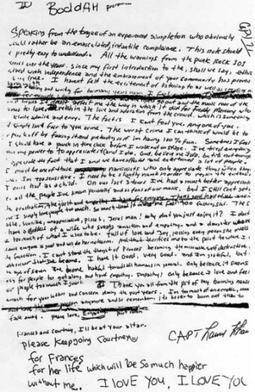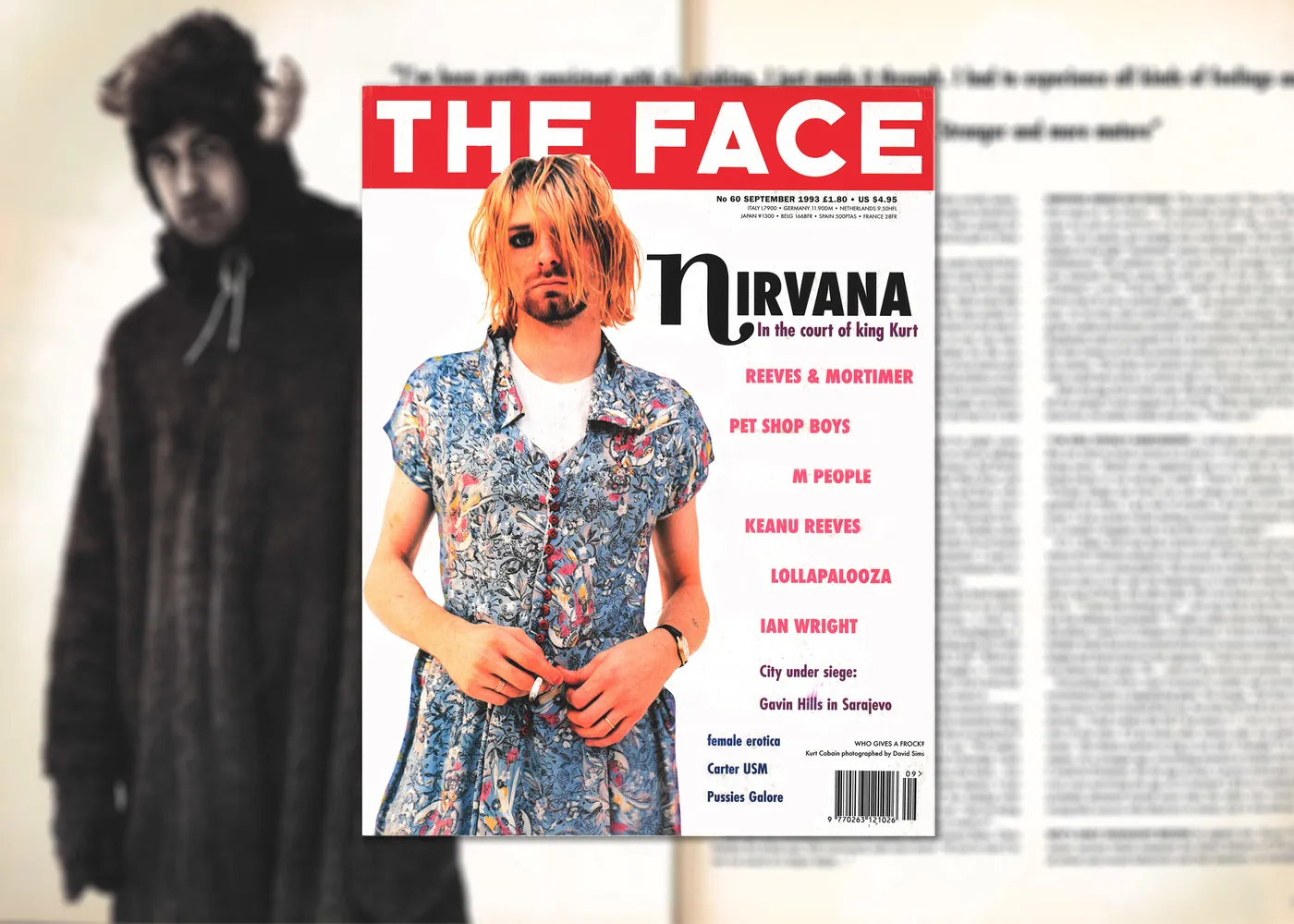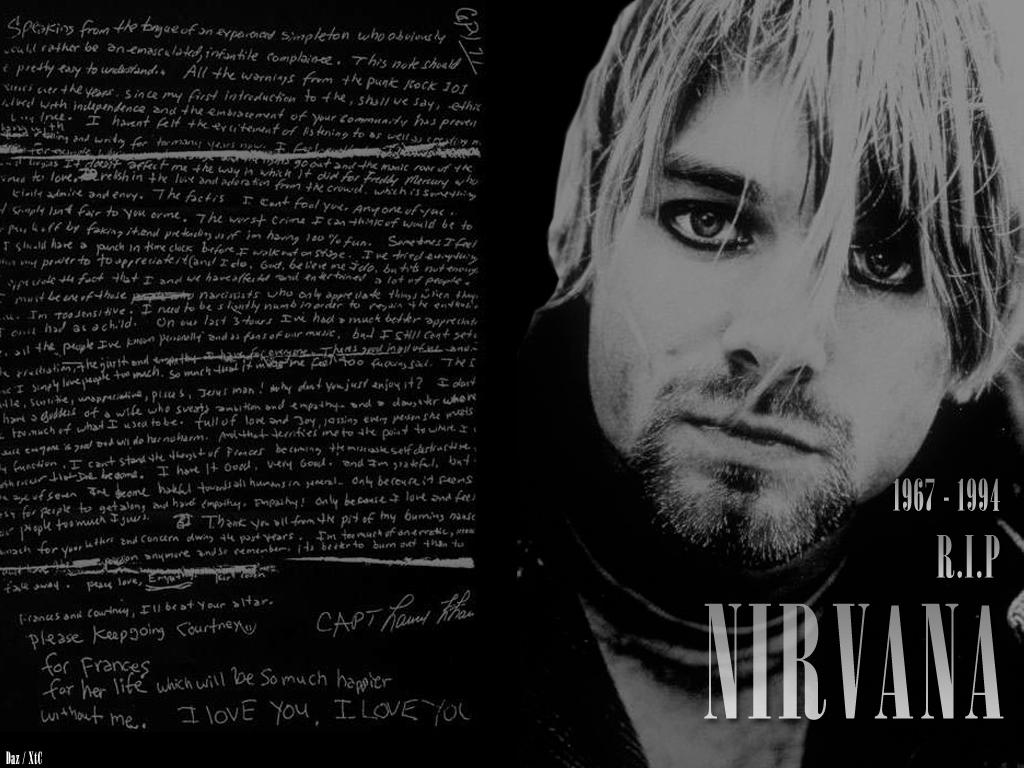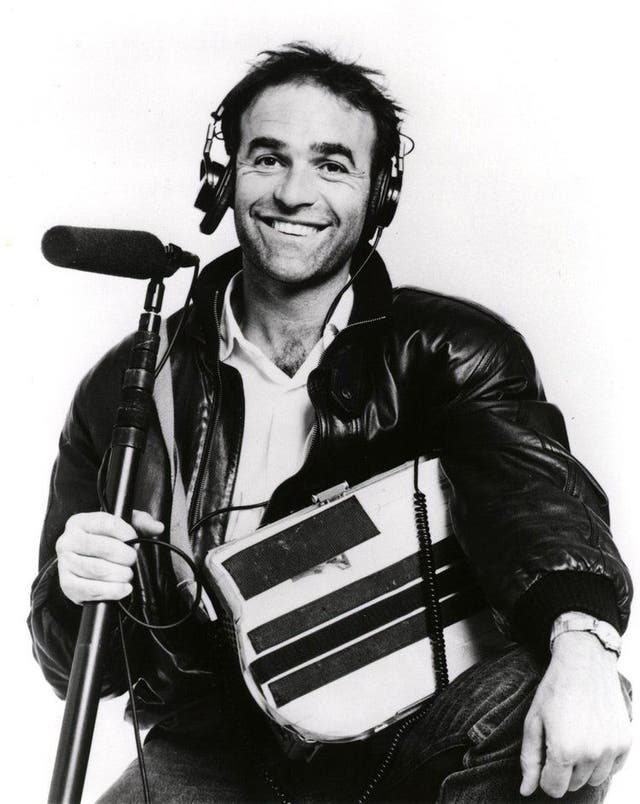We hype up our favorite bands; We critique on sports and cars; We opine about pop culture. On occasion, will do some creative writing. This is PATHOLOGICAL HATE. Follow us on Twitter: @pathological_h8
Wednesday, November 9, 2022
Death of Kurt Cobain
On April 8, 1994, Kurt Cobain, the lead singer and guitarist of the American rock band Nirvana, was found dead at his home in Seattle, Washington. Forensics investigators later determined he had died three days earlier, on April 5. The Seattle Police Department incident report stated that Cobain was found with a shotgun across his body, had suffered a visible gunshot wound to the head, and that a suicide note had been discovered nearby. The Seattle Police ruled Cobain's death as a suicide. Following his death, conspiracy theories that Cobain was murdered were spread.
Kurt Cobain was the lead singer and guitarist of the American grunge rock band Nirvana, one of the most influential acts of the 1990s and one of the best-selling bands of all time. Throughout most of his life, Cobain suffered from chronic bronchitis and intense pain due to an undiagnosed chronic stomach condition: He was also prone to alcoholism, suffered from depression, and regularly used drugs and inhalants: 76 Cobain had two uncles who killed themselves using guns.
On March 3, 1994, Cobain was hospitalized in Rome following an overdose of painkillers. His management agency, Gold Mountain Records, said that the overdose was accidental, and that he was suffering from influenza and fatigue. However, Cobain's wife, Courtney Love, later said the overdose had been a suicide attempt: "He took 50 pills. He probably forgot how many he took. But there was a definite suicidal urge, to be gobbling and gobbling and gobbling." Cobain's cousin Beverly, a nurse, said that the family had a history of suicide, and that Cobain had been diagnosed with attention-deficit hyperactivity disorder and bipolar disorder.
Cobain said that his stomach pain had been so severe during Nirvana's 1991 European tour that he became suicidal, and that taking heroin was "the only thing that's saving me from shooting myself right now". In Charles Cross's biography Heavier Than Heaven, Nirvana bassist Krist Novoselic is quoted on seeing Cobain in the days before his intervention: "He was really quiet. He was just estranged from all of his relationships. He wasn't connecting with anybody." Novoselic's offer to buy dinner for Cobain resulted in unintentionally driving him to score heroin: "His dealer was right there. He wanted to get fucked up into oblivion ... He wanted to die, that's what he wanted to do."
“To Boddah
Speaking from the tongue of an experienced simpleton who obviously would rather be an emasculated, infantile complain-ee. This note should be pretty easy to understand.
All the warnings from the punk rock 101 courses over the years, since my first introduction to the, shall we say, ethics involved with independence and the embracement of your community has proven to be very true. I haven’t felt the excitement of listening to as well as creating music along with reading and writing for too many years now. I feel guilty beyond words about these things.
For example, when we’re back stage and the lights go out and the manic roar of the crowds begins, it doesn’t affect me the way in which it did for Freddie Mercury, who seemed to love, relish in the love and adoration from the crowd which is something I totally admire and envy. The fact is, I can’t fool you, any one of you. It simply isn’t fair to you or me. The worst crime I can think of would be to rip people off by faking it and pretending as if I’m having 100% fun. Sometimes I feel as if I should have a punch-in time clock before I walk out on stage. I’ve tried everything within my power to appreciate it (and I do, God, believe me, I do, but it’s not enough). I appreciate the fact that I and we have affected and entertained a lot of people. It must be one of those narcissists who only appreciate things when they’re gone. I’m too sensitive. I need to be slightly numb in order to regain the enthusiasms I once had as a child.
On our last 3 tours, I’ve had a much better appreciation for all the people I’ve known personally, and as fans of our music, but I still can’t get over the frustration, the guilt and empathy I have for everyone. There’s good in all of us and I think I simply love people too much, so much that it makes me feel too fucking sad. The sad little, sensitive, unappreciative, Pisces, Jesus man. Why don’t you just enjoy it? I don’t know!
I have a goddess of a wife who sweats ambition and empathy and a daughter who reminds me too much of what I used to be, full of love and joy, kissing every person she meets because everyone is good and will do her no harm. And that terrifies me to the point to where I can barely function. I can’t stand the thought of Frances becoming the miserable, self-destructive, death rocker that I’ve become.
I have it good, very good, and I’m grateful, but since the age of seven, I’ve become hateful towards all humans in general. Only because it seems so easy for people to get along that have empathy. Only because I love and feel sorry for people too much I guess.
Thank you all from the pit of my burning, nauseous stomach for your letters and concern during the past years. I’m too much of an erratic, moody baby! I don’t have the passion anymore, and so remember, it’s better to burn out than to fade away.
Peace, love, empathy.
Kurt Cobain
Frances and Courtney, I’ll be at your alter.
Please keep going Courtney, for Frances.
For her life, which will be so much happier without me.
I LOVE YOU, I LOVE YOU!”
On March 31, 1994, Cobain left the rehabilitation center he had checked into the day before, Exodus Recovery Center, by scaling a six-foot wall. On April 2, Cobain took a taxi to a Seattle gun shop, where he received a receipt for firearm shells. Cobain told the taxi driver he wanted to buy shells because he had been burglarized.
On April 8, Cobain's body was discovered in the greenhouse above the garage at his Lake Washington Boulevard East house by VECA Electric employee Gary T. Smith, who arrived that morning to install security lighting. Smith thought Cobain was asleep until he saw blood oozing from his ear. He also found a suicide note with a pen stuck through it inside a flower pot. A Remington Model 11 20-gauge shotgun purchased for Cobain by his friend, musician Dylan Carlson, was found on Cobain's chest. It had been legally purchased by Carlson at Stan Baker's Gun Shop in Seattle. Although conductor David Woodard had built a Dreamachine for Cobain, rumors that Cobain had been using the device heavily in the days leading up to his suicide were contradicted by later reports.
Cobain did not want the gun purchased in his name because he thought the police might seize it for his own protection. The police had taken away his guns twice in the previous ten months. The King County Medical Examiner noted puncture wounds on the inside of both the right and left elbows. The shotgun was not checked for fingerprints until May 6, 1994. According to the Fingerprint Analysis Report, four latent prints were lifted, but they were not usable. The Seattle police report states that the shotgun was inverted on Cobain's chest with his left hand wrapped around the barrel.
On April 14, the Seattle Post-Intelligencer reported that Cobain was "high on heroin when he pulled the trigger". The paper reported that the toxicological tests determined that the level of morphine in Cobain's bloodstream was 1.52 milligrams per liter and that there was evidence of Valium in his blood. The report contained a quote from Randall Baselt of the Chemical Toxicological Institute, stating that Cobain's heroin level was at "a high concentration, by any account". He also stated that the strength of that dose would depend on many factors, including how habituated Cobain was to the drug.
In March 2014, the Seattle Police Department (SPD) developed four rolls of film that had been left in an evidence vault. According to Seattle police, the photographs depict the scene of Cobain's corpse more clearly than previous Polaroid images taken by the police. Detective Mike Ciesynski, a cold case investigator, was asked to look at the film because "it is 20 years later and it's a high media case". Ciesynski stated that the official cause of Cobain's death remained suicide and that the images would not be released to the public; however the images were released in 2016. According to a police spokesperson, the SPD receives at least one request weekly, mostly through Twitter, to reopen the investigation. This resulted in the maintenance of the basic incident report on file.
On April 10, 1994, a public memorial service was held at Seattle Center, where a recording of Courtney Love reading Cobain's suicide note was played. Near the end of the vigil, Love arrived, and distributed some of his clothing to fans who remained. In the following days, Love consoled and mourned with fans who came to her house.
Cobain's body was cremated. Love divided his ashes; she kept some in a teddy bear and some in an urn. She took another portion of his ashes to the Namgyal Buddhist Monastery in Ithaca, New York. There, some of his remains were ceremonially blessed by Buddhist monks and mixed into clay, which were used to make memorial sculptures. A final ceremony was arranged for Cobain by his mother on May 31, 1999, that was attended by both Love and Tracy Marander. A Buddhist monk chanted while Cobain's daughter, Frances Bean Cobain, scattered his ashes into McLane Creek in Olympia, Washington, the city where he "had found his true artistic muse".
Several of Cobain's friends were surprised by his suicide. Mark Lanegan, a long-time friend of Cobain, told Rolling Stone: "I never knew Cobain to be suicidal. I just knew he was going through a tough time." In the same article, Carlson stated that he wished Cobain or someone close to him had told him that the Rome incident was a suicide attempt. Danny Goldberg, founder of Gold Mountain Records, refers in his book Dispatches From the Culture Wars: How the Left Lost Teen Spirit to "the crazy Internet rumors that Kurt Cobain had not committed suicide but had been murdered," stating that Cobain's suicide "haunts him every day".
Anthony Kiedis, lead singer of the Red Hot Chili Peppers, expressed his feelings in his autobiography, Scar Tissue, writing:
The news [of Cobain's death] sucked the air out of the entire house, I didn't feel like I felt when Hillel died; it was more like "The world just suffered a great loss." Kurt's death was unexpected ... It was an emotional blow, and we all felt it. I don't know why everyone on earth felt so close to that guy; he was beloved and endearing and inoffensive in some weird way. For all of his screaming and all of his darkness, he was just lovable.
The song "Tearjerker" from the band's One Hot Minute album was written about Cobain.
A musical hero of Cobain's, Greg Sage, said in an interview:
Well, I can't really speculate other than what he said to me, which was, he wasn't at all happy about it, success to him seemed like, I think, a brick wall. There was nowhere else to go but down, it was too artificial for him, and he wasn't an artificial person at all. He was actually, two weeks after he died, he was supposed to come here and he wanted to record a bunch of Leadbelly covers. It was kind of in secret, because, I mean, people would definitely not allow him to do that. You also have to wonder, he was a billion-dollar industry at the time, and if the industry had any idea at all of him wishing or wanting to get out, they couldn't have allowed that, you know, in life, because if he was just to get out of the scene, he'd be totally forgotten, but if he was to die, he'd be immortalized.
Richard Lee
The first to object publicly to the report of suicide was Seattle public access host Richard Lee. A week following Cobain's death, Lee aired the first episode of an ongoing series called Kurt Cobain Was Murdered, saying there were several discrepancies in the police reports, including several changes in the nature of the shotgun blast. Lee acquired a video that was taped on April 8 from the tree outside Cobain's garage, showing the scene around Cobain's body, which he claimed showed a marked absence of blood for what was reported as a point-blank shotgun blast to the head. Several pathology experts have stated that a shotgun blast inside the mouth often results in less blood, unlike a shotgun blast to the head.
Tom Grant
Tom Grant, a private investigator hired by Love to find Cobain after his departure from drug rehabilitation, said he believes that Cobain was murdered. Grant's theory has been analyzed and questioned by several books, television shows, and films, including the 2015 docudrama Soaked in Bleach. Grant was still under Love's employment when Cobain's body was found. Grant has stated that he finds the events surrounding Cobain's death to be "filled with lies, contradictions in logic, and countless inconsistencies. Motivated by profit over truth as well as a web of business deals and personal career considerations, Courtney Love, her lawyers, and many of Courtney's industry supporters have engaged in an effort to keep the public from learning the real facts of this case."
There are several components to Grant's theory, including the assertion that Cobain could not have injected himself with such a large dose of heroin and still have been able to pull the trigger, the belief that Cobain's note was doctored to make it only appear to be a suicide note, and a purported lack of fingerprints from Cobain or others at the scene. He also asserts that Love had financial motivation to kill Cobain, both in the form of rumors that Cobain was planning to divorce her, and the fact that Cobain had turned down an offer to headline the 1994 Lollapalooza festival for nearly $10 million.
In studying the Rome incident, journalists Ian Halperin and Max Wallace contacted Dr. Osvaldo Galletta, who treated Cobain after the incident. Galletta contested the claim that the Rome overdose was a suicide attempt. "We can usually tell a suicide attempt. This didn't look like one to me," said Galletta, who also contradicted Love's claim that 50 Rohypnol pills were removed from Cobain's stomach. Halperin and Wallace mused, "Grant believes Courtney may have mixed a large number of pills into Kurt's champagne so that when he took a drink, he was actually unknowingly ingesting large amounts of the drug, enough to kill him. But if that's the case, why did she call the police when she found him unconscious on the floor? If she wanted Kurt dead, why didn't she just leave him on the floor until he died?"
Grant believes the claim that the Rome incident was a suicide attempt was not made until after Cobain's death. Prior to the shooting, some close to Cobain, notably Gold Mountain Records, firmly denied he had wanted to die. Grant believes that if that were true, Cobain's friends and family would have been told in order that they could keep a close watch on him. However, others assert that these denials were simply self-serving, in an effort to mask what was really going on behind the scenes. Lee Ranaldo, guitarist for Sonic Youth, told Rolling Stone, "Rome was only the latest installment of [those around Cobain] keeping a semblance of normalcy for the outside world."
Grant counters the claim that he profits from the sale of casebook kits on his website by stating that it offsets some of the costs of his investigation. Grant stated: "I wrestled with that ... but if I go broke, I'll have to give up my pursuit and Courtney wins." Sergeant Donald Cameron, one of the homicide detectives involved in the case, dismissed Grant's theory outright, saying, "[Grant] hasn't shown us a shred of proof that this was anything other than suicide,"[This quote needs a citation] while Seattle homicide detective Mike Ciesynski, who reviewed the case, was quoted as saying of Grant, "An experienced Det. would never have come up with the theories that he's come up with." Grant in turn has accused Cameron of being a personal friend of Courtney Love. Dylan Carlson told Halperin and Wallace that he also did not believe that Grant's theory was valid, and in an interview with Broomfield implied that if he believed that his friend was murdered, he would have dealt with it himself.
Nick Broomfield
Filmmaker Nick Broomfield, deciding to investigate the theories himself, brought a film crew to visit a number of people associated with both Cobain and Love, including Love's estranged father, Cobain's aunt, and one of the couples' former nannies. Broomfield also spoke to the Mentors' bandleader Eldon "El Duce" Hoke, who claimed that Love had offered him $50,000 to kill Cobain. Although Hoke claimed that he knew who killed Cobain, he did not mention a name and offered no evidence to support his assertion. However, he mentioned speaking to someone called "Allen" or "Alain", before quickly interjecting, "I mean, my friend", then laughing, "I'll let the FBI catch him." According to Mentors' bass player Steve Broy, the whole story was concocted to sell supermarket tabloids. Broomfield incidentally captured Hoke's final interview, as he died days later when he was struck by a train in the middle of the night.
Broomfield titled the finished documentary Kurt & Courtney, which was released on February 27, 1998. In the end, Broomfield felt he hadn't uncovered enough evidence to conclude the existence of a conspiracy. In a 1998 interview, he summed up his thoughts: "I think that he committed suicide. I don't think that there's a smoking gun. And I think there's only one way you can explain a lot of things around his death. Not that he was murdered, but that there was just a lack of caring for him. I just think that Courtney had moved on, and he was expendable."
Ian Halperin and Max Wallace
Journalists Ian Halperin and Max Wallace followed a similar path and attempted to investigate the murder theory themselves. Based on evidence gathered in interviews, Halperin and Wallace believed that Cobain wanted to divorce Love near the time of his death, and that she was looking for "a vicious divorce lawyer" to help crush a prenuptial agreement she'd reportedly signed that would keep their respective fortunes separate in the event of divorce. They also made the case that because Nikolas Hartshorne (the coroner in Cobain's case) was an admitted friend of Love's, that this was a conflict of interest. Their initial book, Who Killed Kurt Cobain?, was released in 1999, and drew a similar conclusion to Broomfield's film: while there wasn't enough evidence to conclusively prove foul play, there was more than enough to demand that the case be reopened. A notable element of the book included their discussions with Grant, who had taped nearly every conversation he had undertaken while he was working for Love. Over the next several years, Halperin and Wallace collaborated with Grant to write a second book, 2004's Love and Death: The Murder of Kurt Cobain.
Friends and family
The overall consensus amongst his close friends and family is that Cobain committed suicide. However some of Cobain's friends and family members also believe Cobain was murdered. Hank Harrison, Courtney Love's father, has shared his belief that Love had a motive, there is evidence of foul play, and the case should be re-opened. Cobain's grandfather, Leland Cobain, also publicly stated that he believed Cobain was murdered.
In August 2005, Sonic Youth's Kim Gordon was asked about Cobain's death in an interview for Uncut Magazine. When asked what she thought to be Cobain's motive for suicide, Gordon replied: "I don't even know that he killed himself. There are people close to him who don't think that he did ..." When asked if she thought someone else had killed him, Gordon answered, "I do, yes." In the same interview, Gordon's then-husband and collaborator Thurston Moore stated:
Kurt died in a very harsh way. It wasn't just an OD. He actually killed himself violently. It was so aggressive, and he wasn't an aggressive person, he was a smart person, he had an interesting intellect. So it kind of made sense because it was like: wow, what a fucking gesture. But at the same time it was like: something's wrong with that gesture. It doesn't really lie with what we know.
However, in 2015, in a piece she wrote for The Guardian, Gordon said that she had not been surprised to hear of Cobain's suicide, stating, "I’ll always remember the day Thurston called to tell me Kurt had shot himself. Of course I was totally shocked, but I wasn’t entirely surprised. There had been an incident in Rome, where Kurt had OD’d, but the details were never clear."
Others, however, have dismissed or ignored the conspiracy theories surrounding Cobain's death. In an interview with The Independent, former Nirvana manager and friend of Cobain, Danny Goldberg, emphasized Cobain's erratic and depressed behavior in the days and weeks leading up to his death, stating,
It’s ridiculous. He killed himself. I saw him the week beforehand, he was depressed. He tried to kill himself six weeks earlier, he’d talked and written about suicide a lot, he was on drugs, he got a gun. Why do people speculate about it? The tragedy of the loss is so great people look for other explanations. I don’t think there’s any truth at all to it.
Krist Novoselic shared his thoughts in a Reddit AMA: "I can't believe people think that I would confess to them being part of a criminal conspiracy, especially on line. Also, I beg anyone who thinks they have any real evidence of foul play to go to the police. Finally, one of the reasons I am convinced Kurt killed himself is that he purchased a .20 shotgun. Kurt was not interested in hunting birds or squirrels, he bought that firearm as a suicide device. Suicide is not rational."
In the April 19, 2004 issue of People magazine, some of his family shared a statement about his death:
“Our Family has dreaded the 10th anniversary of the death of our son, stepson and brother Kurt Cobain. Not only do we mourn his passing but we can never forget him, because even after 10 years we’re constantly reminded by the controversy surrounding his death and the innuendos that he was murdered. With the death of a loved one by suicide, a family experiences the guilt and what-ifs. With the death of an icon it never goes away. We all know that Kurt killed himself. Courtney did not kill him nor did she have him killed. We hope that all the quacks who try to make money by questioning his death will remember the music and remember that he did have a family that loved him and a beautiful little girl who doesn’t deserve to forever be reminded of the garbage surrounding his death.
Done and Jenny Cobain and Family Bellingham, Wash.”
Subscribe to:
Post Comments (Atom)










No comments:
Post a Comment